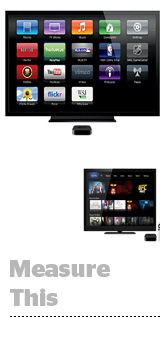 Consumers may spend a lot of time watching video on over-the-top devices and mobile, but advertisers still haven’t invested heavily in those areas.
Consumers may spend a lot of time watching video on over-the-top devices and mobile, but advertisers still haven’t invested heavily in those areas.
While panelists throughout Advertising Week in New York City agreed that the development of measurement techniques will help close that gap, device fragmentation complicates these initiatives.
Still, connected TV makers and distributors are looking at how consumers are digesting content and bringing those learnings into discussions with brands and advertisers, said Scott Burke, Yahoo’s SVP of advertising and data platforms, who spoke at Alphonso Summit: Extending TV Media Buys to Mobile on Wednesday.
“Mobile is certainly the point of consumption, but publishers are creating this linkage to connect experiences in digital to TV,” he said. Yahoo’s 2011 acquisition of social TV and content recognition app IntoNow helped establish its Smart TV platform strategy and its July purchase of mobile ad marketplace and analytics platform Flurry provides app usage data.
Linking these capabilities interests marketers targeting specific audience segments, particularly when trying to understand how smart TV app use and digital video will ultimately affect brand goals, Burke said.
Metrics is all about targeting, said Lisa Weinstein, president of global, digital, data and analytics at Starcom MediaVest. “Data-driven TV is all about finding viewers on a smart TV, moving them through to digital video and closing the loop with measurement and determining if this ‘spot’ drove an action,” she said.
Screen Comfort
Connected TV and mobile video might support advanced attribution and analytics, but marketers don’t seem ready to go all in. “Truth be told, clients still utilize legacy models,” Weinstein said.
But she also pointed out this attitude is beginning to evolve: “We are seeing legacy measurement systems beginning to converge with newer forms of measurement, [and it’s why] we’ve seen large digital companies acquire attribution companies themselves.”
For advertisers to shift budget from traditional areas – like display, traditional TV or print – they must be confident mobile video and connected TV ad campaigns meet reach and frequency demands.
“Scale is the number one driver of revenue, period,” said James Rooke, GM of business solutions at FreeWheel, during a panel called The New Generation of TV Advertising Is Streamed.
For example, consider an episode of Family Guy.
“The publisher would argue whether it’s being viewed through connected TV, my iPad or a desktop,” he said. “But it’s still an episode of Family Guy. It’s still TV. It’s device agnostic and if they fragment that inventory, then it’s more difficult to create the scale to feed the larger buys.”
Advertisers tend to fall back on known measurement commodities like Nielsen Online Campaign Ratings (OCR), said Peter Naylor, SVP of ad sales for Hulu at that same panel.
“[There’s] so much comfort from the TV buying side with Nielsen and Online Campaign Ratings (OCR), we use that as a proxy for the rest of the screens,” Naylor said. This tactic provides some justification for marketers to move budget.
Complementing TV
A report issued Wednesday by Nielsen and video ad platform BrightRoll called “Mobile Video Advertising Strengthens TV Media Investments” found that advertisers buying TV inventory, who also invested at least 15% of their budgets in mobile video, reduced their incremental cost-per-target-rating-point (TRP) by up to 13.7%.
“You can look at mobile as a mechanism to accompany a TV buy if you want to redistribute reach or frequency or reach certain types of audiences you might not be getting through a TV buy,” Andrew Feigenson, managing director of digital at Nielsen told AdExchanger. “TV still gets a lot of viewership, but…when you look at these other platforms, there’s a way to help even out that [frequency]” and drive incremental reach.
While Nielsen recently rolled out a version of OCR for the mobile Web and mobile apps (BrightRoll, FreeWheel and Adap.tv all signed on to use it), it’s just developing now a solution for over-the-top devices. Feigenson said Nielsen expects to roll something out more formally “at some point next year.”
While metrics that work across device types are critical, advertisers will also need to figure out how to tweak planning and buying to account for enhanced addressability.
“When we move from cookies to people, it removes so much of the‘channel distinction’ we’re used to,” Weinstein said. “As Facebook did with Atlas, the proposition of finding ‘people’ cross screen is growing in importance with marketers. While I wouldn’t say ‘TV plus mobile’ is the full potential of mobile, Facebook is getting a billion views on video daily and two-thirds of that is mobile.”
Ryan Joe contributed.













